Selenicereus Grandiflorus Care
Written by Iris
Oct 09 2021
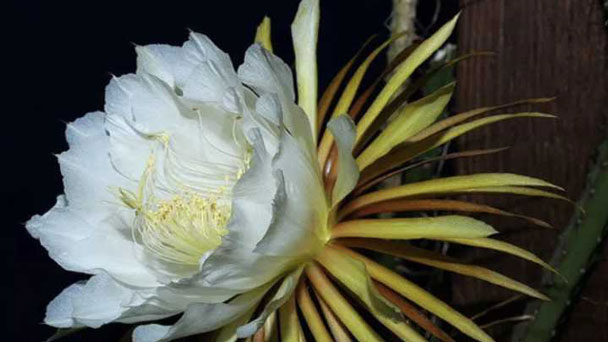
Selenicereus Grandiflorus is part of the cactus family, native to Mexico. Selenicereus Grandiflorus is epiphytic or stone and uses adventitious roots to climb the surrounding trees in search of more light and support its weight. Selenicereus Grandiflorus can be several meters long. Under the right conditions, Selenicereus Grandiflorus will have a large fragrant flower that opens at night. Selenicereus means "Moon Cereus", referring to the evening bloom, and the specific pronoun "grandiflorus" comes from Latin meaning "large flowered".
Only if you are going to have it indoors, it is highly recommended to get a lamp for Selenicereus Grandiflorus plants so that its development is adequate. In this way, you will prevent it from becoming etiolate, that is, its stems from lengthening and weakening.
Flower pot: As a substrate for pots, it is highly recommended to use coarse sand (pumice, akadama, kiryuzuna or similar) mixed with a little peat.
Outdoor: the soil in which it will grow must be light, and sandy. It is important that the water drains very well, as it does not like puddles. It can be on stony soils without problem.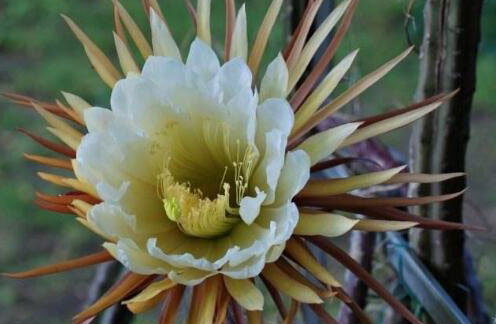
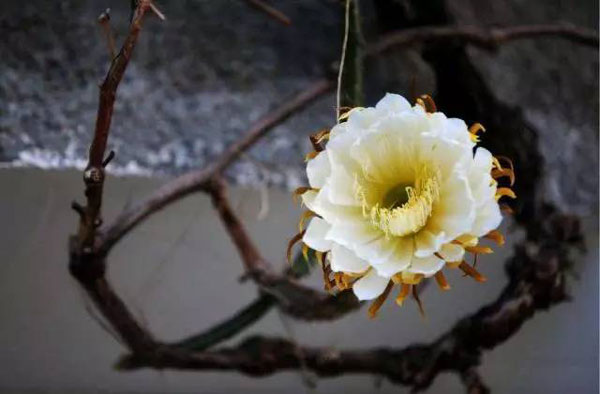
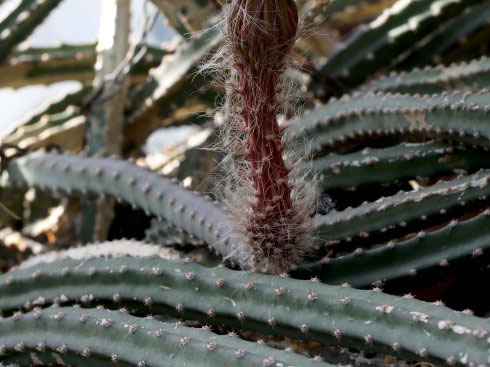
To give Selenicereus Grandiflorus a beautiful shape, you can use the notched supports, or rings. The stems of cactus can be wrapped around them. But it should be done with extreme caution: the blades of Selenicereus Grandiflorus not twisted and can break when attempting flexion.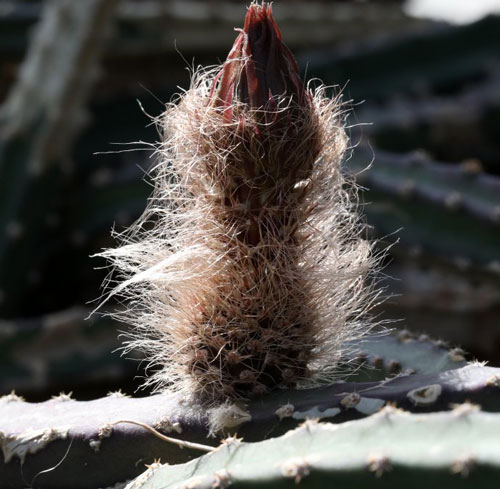
Choose a sufficiently large vessel.
At the bottom, a drainage of porous material is applied.
Completely remove the old substrate from the roots.
Put the cactus over.
Fill cavities with humus rich substrate.
Cast heavily.
The fleshy shoots of beauty are studded with thorns, so wear thick gloves for your own protection. Selenicereus Grandiflorus is also suitable for cultivation in hydroponic culture. Advantageous is the water level indicator of the special planter. Thanks to a water level indicator, you know exactly when to refill. However, a change from soil to hydroculture is discouraged. Because the substrate must be completely removed from the Selenicereus Grandiflorust roots to prevent decay. Buy cacti in hydroponics directly or use offshoots from your own Selenicereus Grandiflorus.
The meter-long, meandering shoots of the exotic cactus can quickly become a problem, especially in confined spaces. At the ends appear the short-lived flowers. To tend the tendrils to some extent, you can support them on a trellis or decoratively grow along the walls of the room.
Selenicereus Grandiflorus is the common name referring to a large number of flowering ceroid cacti that bloom at night. The flowers are short lived, and some of these species, such as Selenicereus Grandiflorus, bloom only once a year, for a single night.
Where to Grow Selenicereus GrandiflorusHow to Grow Selenicereus GrandiflorusSelenicereus Grandiflorus Propagation with SeedsSelenicereus Grandiflorus Propagation with Stem CuttingsHow to Care for Selenicereus GrandiflorusSelenicereus Grandiflorus Light RequirementsSelenicereus Grandiflorus Soil CareSelenicereus Grandiflorus WateringSelenicereus Grandiflorus Temperature CareSelenicereus Grandiflorus Fertilizer CareSelenicereus Grandiflorus Pruning CareSelenicereus Grandiflorus Pests & Diseases CareSelenicereus Grandiflorus RepottingSelenicereus Grandiflorus FAQHow often does Selenicereus Grandiflorus bloom?Can I grow Selenicereus Grandiflorus indoors?:How do I know when my Selenicereus Grandiflorus will bloom?
Where to Grow Selenicereus Grandiflorus
Selenicereus grandiflorus is a cactus that need light, but unlike others, selenicereus Grandiflorus can be filtered. In its natural habitat selenicereus grandiflorus grows by climbing on trees or rocks, so it does not need to be directly shone by the Sun.Only if you are going to have it indoors, it is highly recommended to get a lamp for Selenicereus Grandiflorus plants so that its development is adequate. In this way, you will prevent it from becoming etiolate, that is, its stems from lengthening and weakening.
Flower pot: As a substrate for pots, it is highly recommended to use coarse sand (pumice, akadama, kiryuzuna or similar) mixed with a little peat.
Outdoor: the soil in which it will grow must be light, and sandy. It is important that the water drains very well, as it does not like puddles. It can be on stony soils without problem.

How to Grow Selenicereus Grandiflorus
Selenicereus Grandiflorus Propagation with Seeds
A feasible way to multiply Selenicereus Grandiflorus is by seeds, also in spring although it is possible in summer. These you have to sow them in seedbeds with holes, for example pots or planters, and with quality cactus soil (for sale here!). Place the Selenicereus Grandiflorus seeds on the surface, without crowding them, and spray them with water.Selenicereus Grandiflorus Propagation with Stem Cuttings
If you want to get new Selenicereus Grandiflorus copies, it is highly advisable to multiply it by stem cuttings. This is done in spring, simply cutting a piece from Selenicereus Grandiflorus, waiting about 7 days for the wound to dry well, and then planting it in a pot with a cheek bone for example. In about 10 days it will produce its first roots, but you must have it in that same container for at least a year, until it has rooted well.
How to Care for Selenicereus Grandiflorus
Selenicereus Grandiflorus Light Requirements
Selenicereus Grandiflorus is a plant that is designed to grow in the shadier parts of the jungle, which means that you will not want to give them too much direct sunlight, especially during the hottest part of the afternoon. They do need some sunlight, though, or the flowers will not be able to bloom properly. If you have a location in your home that has excellent indirect sunlight, this is going to be a great location to grow it.Selenicereus Grandiflorus Soil Care
Land for Selenicereus Grandiflorus should be lightweight, breathable and fertile. Suitable soil that includes sand and turf. The mixture can also create your own, but the flower will satisfied with universal ground for cacti. Additionally, you can add a medium-sized expanded clay, gravel or brick fragments, and also crushed charcoal to prevent putrefactive processes. On the bottom of the tank is placed a thick layer of drainage. From time to time the earth in the pot is recommended to loosen a bit to increase airflow to the root system.Selenicereus Grandiflorus Watering
Selenicereus Grandiflorus, as a tropical plant, should be watered with lukewarm water. Rainwater is best, as tap water may contain fluoride and other minerals that can cause salt to build up in the soil. Distilled water may also be used. The soil should dry out between each watering. Watering should be reduced greatly at the start of fall, and the Selenicereus Grandiflorus plant placed in a cool, dark location so it can go dormant during the fall and winter (October through early March). These Selenicereus Grandiflorus plants can then be brought back into sunlight in the spring, when they will begin to grow again with regular care.Selenicereus Grandiflorus Temperature Care
In summer, the Selenicereus Grandiflorus cactus will suit the usual temperature of +18 degrees. It transfers heat quietly. In winter, when the plant has a rest period comes, you need to provide him with a reasonable cool — not above +17 degrees. The absence of such temperature changes can lead to a thinning of the stems. Selenicereus Grandiflorus can only from-for sharp changes of conditions or cold drafts. In this case, he can’t lose the ensuing buds.Selenicereus Grandiflorus Fertilizer Care
Selenicereus Grandiflorus has a rapid growth rate. To maintain the health of Selenicereus Grandiflorus plants need a constant flow of nutrients. During periods of active development is required to fertilize it almost every week — up to 3 times a month. Will fit the standard complex for succulents. From late autumn to March Selenicereus Grandiflorus not fertilize.
Selenicereus Grandiflorus Pruning Care
Long stems of Selenicereus Grandiflorus can too grow and lose visual appeal. Separate the stems that spoil the appearance, you can prune. Small trimming (up to 3 stalks) will not affect the health of the plant, but a radical haircut is able to hurt him. To shape this cactus is similarly useless: remove a single escape will not lead to a rise in many side.To give Selenicereus Grandiflorus a beautiful shape, you can use the notched supports, or rings. The stems of cactus can be wrapped around them. But it should be done with extreme caution: the blades of Selenicereus Grandiflorus not twisted and can break when attempting flexion.
Selenicereus Grandiflorus Pests & Diseases Care
Although, Selenicereus Grandiflorus is an easy-to-care-for plant just like Monstera Adansonii. Still, it is not immune to mealybugs, root rot, or other harmful insects. Here’s how you can protect your beautiful Selenicerues grandiflorus from all the pesky bugs before blooming: Use a mixture of water and soap or even a lacewing to shield the leaves from insects and maintain regular watering to prevent the plant from root-rot.
Selenicereus Grandiflorus Repotting
Every 3 to 4 years - or when the planter is completely rooted through - the queen of the night has to be repotted. Shorter intervals are not recommended, because the Selenicereus Grandiflorus needs vigorous roots to form the flower.Choose a sufficiently large vessel.
At the bottom, a drainage of porous material is applied.
Completely remove the old substrate from the roots.
Put the cactus over.
Fill cavities with humus rich substrate.
Cast heavily.
The fleshy shoots of beauty are studded with thorns, so wear thick gloves for your own protection. Selenicereus Grandiflorus is also suitable for cultivation in hydroponic culture. Advantageous is the water level indicator of the special planter. Thanks to a water level indicator, you know exactly when to refill. However, a change from soil to hydroculture is discouraged. Because the substrate must be completely removed from the Selenicereus Grandiflorust roots to prevent decay. Buy cacti in hydroponics directly or use offshoots from your own Selenicereus Grandiflorus.
The meter-long, meandering shoots of the exotic cactus can quickly become a problem, especially in confined spaces. At the ends appear the short-lived flowers. To tend the tendrils to some extent, you can support them on a trellis or decoratively grow along the walls of the room.
Selenicereus Grandiflorus FAQ
How often does Selenicereus Grandiflorus bloom?
once a yearSelenicereus Grandiflorus is the common name referring to a large number of flowering ceroid cacti that bloom at night. The flowers are short lived, and some of these species, such as Selenicereus Grandiflorus, bloom only once a year, for a single night.
Can I grow Selenicereus Grandiflorus indoors?:
Yep, I had mine sitting on the top of our kitchen cupboard for a few months last year. As with all plants, its best on rotation – bring it inide for a month or so, then send it back outside for a few months.How do I know when my Selenicereus Grandiflorus will bloom?
Selenicereus Grandiflorus will not begin to flower until it is four or five years old and will begin with just a couple of flowers. The incidence of blooms will increase as the Selenicereus Grandiflorus grows older. The flower is breathtaking at almost 7 inches (18 cm.) across and produces a heavenly scent.Latest Updated
- Benefits of Bugleweed - 7 Science-backed Health Benefits
- Bugleweed Dangers & Side Effects - Is It Poisonous?
- How to Plant Evergreen Trees - What You Should Know
- When to Plant Evergreens - Grow Guide for Evergreen Trees
- 12 Wonderful Evergreen Shrubs for Your Garden
- 12 Popular Evergreen Plants with Pictures for Beginners
- When And How To Prune A Lilac Bush Like a Pro
- How to Grow & Care for Lilac Vine (Hardenbergia Violacea)
- Japanese Lilac Tree (Syringa Reticulata) Care & Propagation Guide
- Shumard Oak Pros and Cons - What to Know
Popular Articles
- Winter maintenance of Antirrhinum Majus
- How to Grow Terminalia Mantaly Tree
- How to Grow and Care for Crossostephium Chinense
- How to grow Antirrhinum Majus in spring
- Peristeria Elata (Dove Orchid) Profile: Info & Care Guide
- Underwatered Snake Plant (Sansevieria Trifasciata) - Signs And How To Fix
- How to Care for Brazilian Jasmine Plant (Mandevilla Sanderi)
- How to Grow & Care for Graptopetalum Purple Delight in Summer
- Rosa Chinensis (China Rose): Plant Growing & Care Tips
- How to Care for Baby Sun Rose (Aptenia Cordifolia)